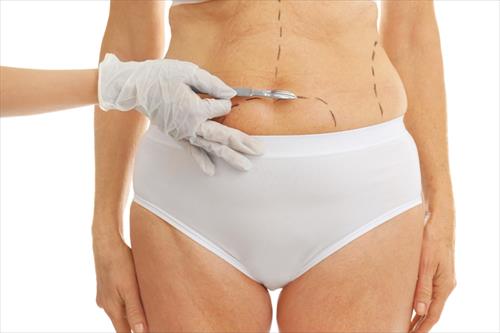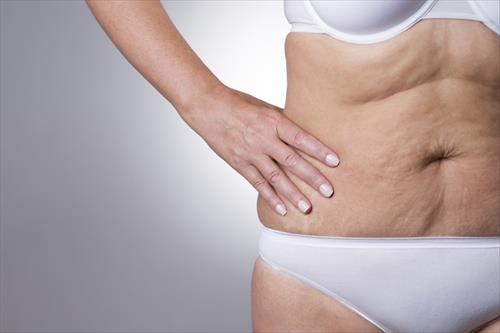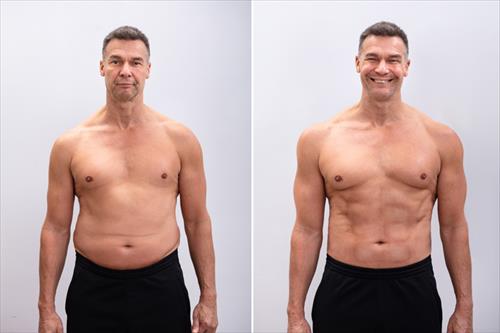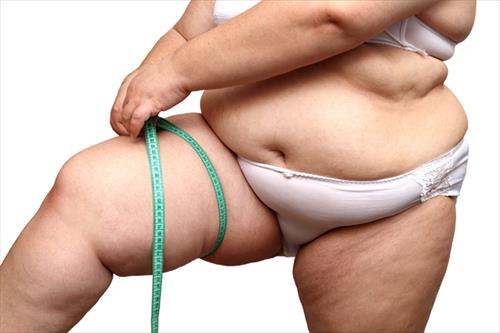



Body Contour-1 Body Contour-2 Body Contour-3 Body Contour-4
If you have lost a lot of weight you may not be happy with the overall relaxation of your skin in many parts of the body. In this case, the operations are about improving the image of the body contour.
Some patients may need to restore only one area of the body. However, the most important percentage of those who lost several kilos underwent more than one operation on various parts of his body, within a period of 12-18 months. Despite this great time commitment, the end result is extremely rewarding for patients. The best results of body contouring surgeries are achieved in patients who have approached their ideal body weight (BMI: 20-30). However, large changes can be achieved in people with a BMI greater than 30.
People with a BMI greater than 35 suffer from malignant obesity. This means that they are more likely to suffer from diabetes, osteoarthritis, high blood pressure with a high chance of having a stroke. The greater the fat loss in diet programs for weight loss, the better the results of cosmetic surgery on the body. However, not very rarely, these patients who lose many pounds still have a large amount of subcutaneous fat. . The combination of liposuction of a large amount of fat and appreciation of the excess skin, increases the duration of the operation and increases the chance of thromboembolic events in the lower extremities, as well as the infection of the wound. For this reason Dr. Antoniadis prefers liposuction to usually be preceded by a trimester before loose skin resection operations on various parts of the body.
Lifting the lower body
The surgical technique of circular straightening of the lower body circumference radically changed the result of obese people who had lost many pounds. In essence, this technique involves the simultaneous straightening of the abdomen, thighs, buttocks and back. But especially the buttocks are significantly improved with this method. The more circular technique brings about a dramatic change, described by patients as their life-changing surgery. Additional liposuction is an integral part of this procedure. Lower body surgery can be combined with other surgeries, such as brachioplasty, breast surgery (shrinkage / augmentation / straightening).
Surgical technique
The operation takes about 4-6 hours in a minute patient, however its duration can be extended when a large liposuction is required or in case of additional surgery on another part of the body. At the end of the operation, drainage pipes and a pressure dressing are placed.
After surgery
Every patient is encouraged to mobilize from day one. The discharge from the clinic takes place on the 5th postoperative day. If the drainage pipes have not been removed until discharge, patients may go home with them. The tubes will be removed if the drainage of fluid from the wound stops during the visit to the doctor's office. The pressure dressing should be worn for 4-6 weeks and in case of hernia repair or liposuction. The most intense exercise can start after the sixth week, while the 3-4 week abstinence from work is considered sufficient.
Upper body erection
General comments on body contouring surgery after heavy weight loss
DIABETES: This condition increases the risk of postoperative complications, such as infection and rupture of the wound. Type 2 diabetes is most often due to obesity and it is very common for blood sugar levels to drop after weight loss.
SMOKING: The habit of smoking is an additional aggravating factor for the occurrence of complications, such as deep vein thrombosis, infection and disintegration of the wound. It is often necessary to stop smoking six weeks before the day of the operation (with confirmation of a blood and urine test) in order for a cosmetic or reconstructive operation to be safely possible.
DEEP VEIN THROMBOSIS: EFTH is a serious and at the same time predictable surgical complication. In the case of accumulation of blood clots in the deep venous system of the lower extremities, they cause painful swelling, with the possibility of causing chronic venous insufficiency. If a clot is large in size, part of it can rupture and be directed through the bloodstream to the lungs, causing pain and shortness of breath or, in the worst case, lead to death. This complication is called a pulmonary embolism. Deep vein thrombosis requires anticoagulant treatment for three months, while pulmonary embolism.
PREVENTION
- Pressure socks below the knee
- External pressure is applied to the entire surface of the feet until the day of patient mobilization
- Anticoagulant treatment
- Rapid mobilization of the patient
BLOOD TRANSFUSION
Blood transfusions are required not only to maintain cardiovascular function, but also to help patients heal and mobilize early by preventing them from feeling tired after surgery.
DRAINAGE TUBES: Drainage tubes are useful for draining body fluids (blood / serum) from the subcutaneous cavities of surgical wounds. These are not removed until the drainage of the liquid is stopped to avoid serous collection. So there may be tubes that remain in the wound for up to two weeks. It is now common practice for patients to leave the clinic with drains that are later removed in the doctor's office or change room.
LIQUID COLLECTION: The collection of fluid in a surgical cavity is called serous collection (if the fluid is blood it is called hematoma. To prevent this collection, pressure gauges and drains are applied. The problem caused by serous collection is the separation of its two surfaces. This leads to a vicious cycle of continuous concentration of serous fluid in a cavity that can not be closed. Treatment begins with draining the serous fluid with a syringe on a weekly basis. the fluid is contaminated, surgical cleaning of the cavity is required.
PRESSURE CLOTHES: Most surgeries related to the improvement of the body contour require the application of pressure garments postoperatively for a period of 4-6 weeks. Especially after the liposuction, the micro-tunnels that are created impose the constant local pressure in order to achieve the best possible aesthetic result.
SCARS: The scars that concern the circular scar around the abdomen as well as the scars around the chest heal smoothly. Unlike scars on the arm and inside the thighs that take longer to heal. In particular, the scars of the brachioplasty may be red for a long time, but even after a year they will become quite indistinguishable.
RECONSTRUCTION: Corrective surgery may be mandatory after a period of time, as after a large weight loss the skin may relax again. No matter how tight the skin may look after surgery, sometimes the same surgery can be repeated to achieve the best possible result. It should be made clear, however, that the repetition of the operation is not a small correction but literally the performance from the beginning of the same operation, which is just as costly and time consuming as the previous one. It should also be noted that even new scars will take at least 6 to 12 months to mature.
COMPLICATIONS AND PATIENT PERMISSION: Any surgery carries the risk of complications. These have been highlighted and explained before the operation, so that the patient has realized what can happen and has consciously consented to the operation to be performed, knowing all the possible problems that may arise from it.










 Login
Login Forgotten password
Forgotten password